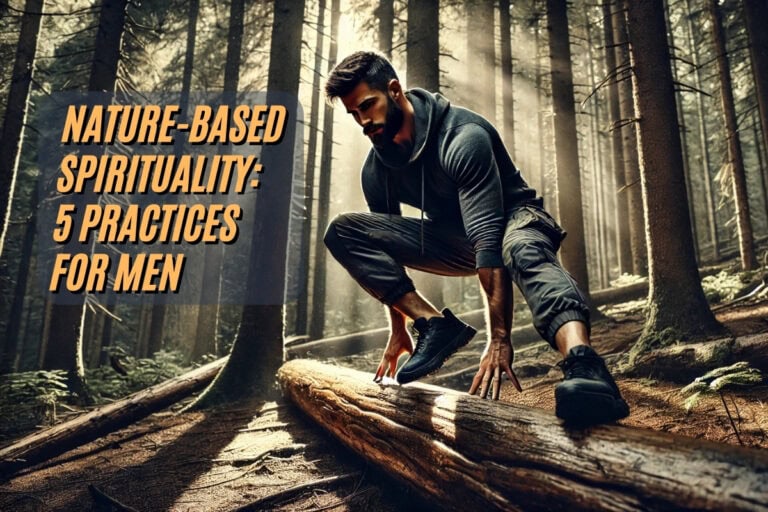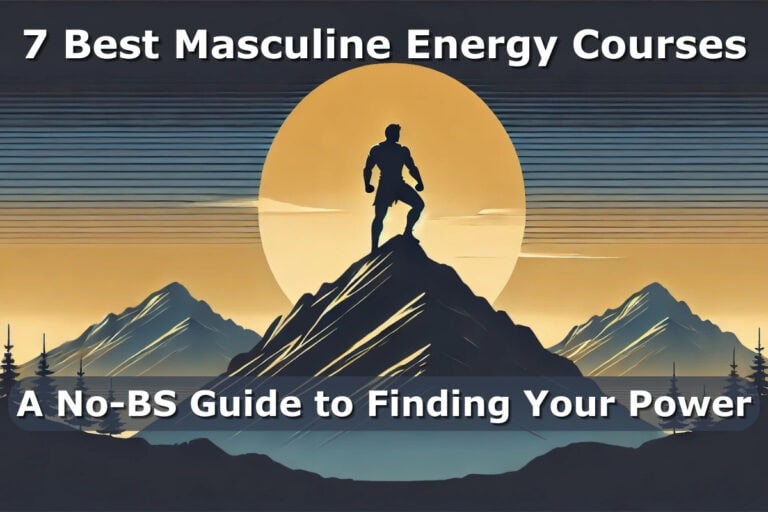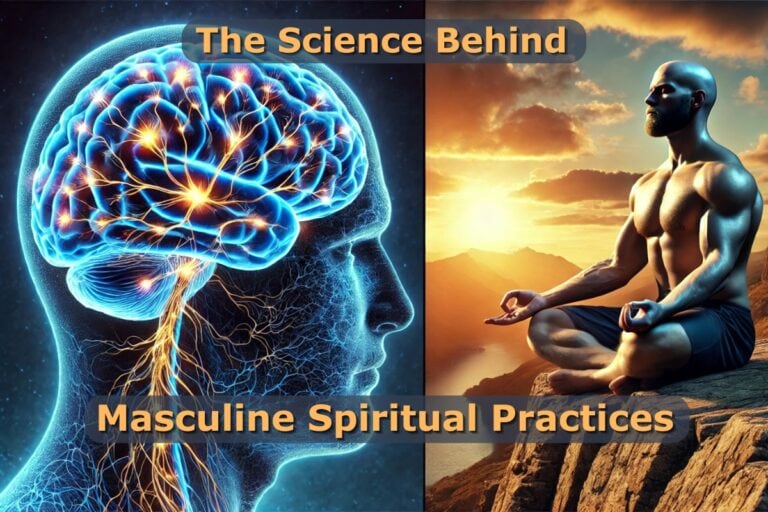
The truth about emotional intelligence? My real understanding didn’t come from books or seminars – it emerged through countless conversations, relationships, and business dealings that shaped my journey. Each interaction, from business negotiations to intimate personal moments, taught me something profound about the power of truly understanding emotions.
I was good at making connections – growing a business, building networks, and starting relationships. But maintaining them was different. While I could navigate the surface of social and professional life, something essential was missing in how I related to others and, ultimately, to myself.
The same patterns kept emerging:
- Promising connections that fizzled
- Business dealings that stalled
- Friendships that stayed surface-level
Through journaling and honest reflection, I discovered a hard truth: I wasn’t deeply understanding emotions – mine or others’ – I was just managing them.
I learned that emotional intelligence isn’t just about reading people or navigating social situations. It’s about accessing a deeper level of connection and influence that transforms every interaction in your life. It’s the difference between someone who builds lasting impact and someone who just moves through the motions.
In this guide, we’ll explore how masculine spirituality becomes the key to unlocking real emotional intelligence with practical methods that enhance every relationship you build. No forced vulnerability – just authentic practices for developing genuine connection and unshakable presence.
What Is Emotional Intelligence and Why Men Struggle With It
Here’s what most men get wrong about emotions: they think being mentally tough means feeling nothing. Like me, they spend years perfecting the art of the stone face, thinking that’s what strength looks like.
But after spending time with real warriors and leaders, I noticed something different – these men weren’t emotionally numb. They’d mastered their emotions instead of letting their emotions master them.
The 4 Core Pillars of Emotional Intelligence for Men
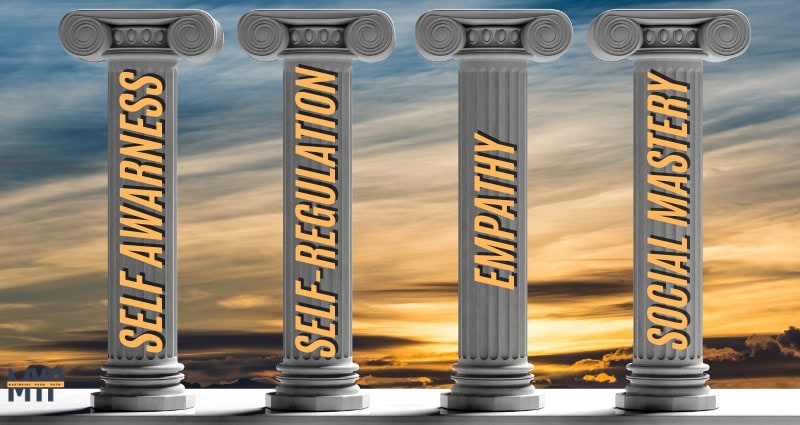
Let’s cut through the noise about what emotional intelligence means for men.
This isn’t about group hugs or crying sessions – it’s about developing mental discipline that serves you in every situation.
Self-Awareness
Think of this like checking your instruments before battle. Most guys react without understanding why.
They get triggered by a comment at work or blow up during an argument, never stopping to ask, “Why am I actually reacting this way?”
Real self-awareness means knowing your emotional terrain – what sets you off, what drives you, and what’s actually worth responding to.
Self-Regulation
This is where most advice falls short. You’ll hear people say, “Control your emotions,” but nobody explains how.
The truth? Self-regulation isn’t about suppression – it’s about direction.
Like a skilled martial artist who channels aggression into precise movements, you learn to use emotional energy for momentum instead of letting it throw you off balance.
Empathy
Think of this as your ability to read both the field and the players. While most men focus solely on their own position, true masters can step into different viewpoints simultaneously.
It’s like having a mental radar that picks up not just what others are saying but why they’re saying it.
This deeper understanding lets you navigate situations with an open mind, making decisions that resonate beyond your own interests.
Social Mastery
This is where everything comes together.
When you understand yourself and others, you naturally lead better.
- Your relationships improve because you’re responding with intention instead of reaction.
- Your career advances because people trust your judgment.
- You make decisions based on clarity rather than impulse.
The Modern Crisis of Masculine Emotional Intelligence
Let’s face reality: we’re living in an era where most men are emotionally handicapped. Not because they’re weak but because nobody has taught them how to handle emotions effectively. I see three main reasons for this:
Early experiences with our fathers and parents shape how we handle emotions today. Whether from absence, emotional distance, or difficult family dynamics, these unresolved patterns become deeply embedded.
Our fathers often passed down their own unhealed wounds, creating cycles of emotional suppression that influence all our relationships and interactions. These inherited patterns become the lens through which we view our emotional world
Traditional societies understood something we’ve forgotten: men need structured guidance to develop emotional maturity.
In ancient cultures, warriors learned to channel their emotions through disciplined practices, mentorship, and sacred rites of passage.
Today, we’ve lost understanding of how valuable this is for a man’s development.
Without these initiatory experiences, men are left to figure out emotional mastery through trial and error – often at great personal cost.
Modern culture has created a dangerous confusion between emotional suppression and emotional strength. Many men pride themselves on being “stoic,” when they’re actually just burying their feelings deeper.
This misinterprets what real Stoicism teaches us. The ancient Stoics, like Marcus Aurelius, understood that true strength comes from feeling deeply while maintaining the wisdom to choose our responses.
It’s not about feeling nothing – it’s about feeling everything and responding with intention.
Why does this matter? Because unprocessed emotions will wreck your life one way or another. They’ll show up as:
- Relationship patterns you can’t break
- Career plateaus you can’t push past
- Anger that erupts at the wrong moments
- Decisions that sabotage your progress
This is where spiritual practices become crucial—not as some mystical solution but as time-tested methods for developing emotional mastery. The ancient Stoics knew this, and modern warriors like Jocko Willink practice it. Spirituality is about building the mental discipline to feel what you need to feel, understand it, and channel it productively.
The path forward isn’t about becoming emotionally soft – it’s about becoming emotionally skilled. In the next section, we’ll explore how masculine spirituality provides the foundation for this development.
The Masculine Art of Emotional Intelligence
Bruce Lee said it best: “Be like water.”
Most men approach emotions like they’re building a dam – trying to control, contain, and suppress what they feel. I did too, until I realized this rigid approach was blocking my ability to truly understand and work with my emotions.
What changed my perspective was studying powerful men – from business leaders to martial artists. They weren’t fighting their emotions; they were flowing with them. Like water, they’d learned to read, adapt, and channel emotional energy rather than resist it.
This is where spiritual practice becomes essential. Not as some mystical pursuit, but as a practical framework for developing deeper emotional intelligence. It’s the difference between trying to stop a river and learning to understand its natural flow and power.
The Connection Between Masculinity, Spirituality, and Emotional Control
Throughout history, the most impactful men have understood something vital: true masculine power isn’t just physical or mental – it’s spiritual.
This three-way connection between masculinity, spirituality, and emotional control creates a foundation for extraordinary impact. When these elements align, men discover a depth of strength that transcends mere force of will or temporary discipline.
Think about Viktor Frankl for a second.
This man survived the Holocaust not just through physical endurance but by developing a spiritual practice that gave him control over his mental state. In his darkest moments, he discovered something crucial:
While he couldn’t control his circumstances, he could control his response to them.


Consider Muhammad Ali’s approach to boxing.
Everyone saw his physical training, but few noticed his spiritual discipline. Between fights, he spent hours in quiet reflection, developing the mental clarity that made him untouchable in the ring.
His famous quote, “Float like a butterfly,” wasn’t just about footwork – it was about achieving a state of calm focus under extreme pressure.
Or take Nelson Mandela.
Twenty-seven years in prison could’ve filled any man with rage. Instead, he turned his cell into a spiritual training ground.
He studied his emotions, learned to channel them, and emerged not as a bitter ex-prisoner but as a leader who could transform a nation.
These men weren’t born with supernatural emotional control. They built it through consistent practice
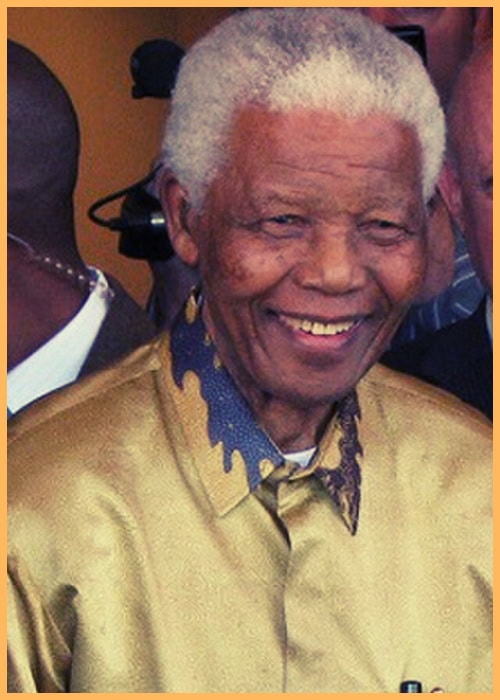
Each found his own way to combine masculine strength with spiritual depth:
- Frankl developed logotherapy
- Ali had his morning rituals
- Mandela practiced meditation and strategic thinking
The pattern is clear:
Spiritual practice isn’t separate from masculine power – it’s the foundation that makes that power useful. Without this foundation, you’re just raw energy without direction.
Suppression vs. Mastery—The Masculine Approach to Emotions
Here’s where most men get stuck: they think their only options are to either bottle up emotions or let them run wild. Let me break down why both approaches fail.
Look at Ray Dalio, founder of the world’s largest hedge fund. Like most financial guys, he could’ve responded to market pressure – either shutting down emotionally or burning out from stress.
Instead, he turned to meditation, not as an escape but as a tool to see his emotions clearly and make better decisions. Now, he requires his team to practice it, too.

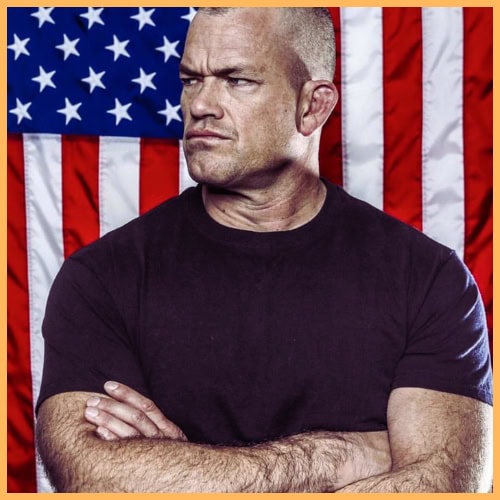
Former Navy SEAL Jocko Willink talks about this. On the battlefield, emotional suppression gets you killed. You need awareness – of your fear, your anger, your doubt. Jocko doesn’t pretend these emotions don’t exist.
He acknowledges them, learns from them, and channels them into decisive action. That’s why he starts each day at 4:30 AM with physical training and reflection time.
The Difference Between Suppression and Mastery Shows Up Everywhere:
Suppression
Mastery
This is where spiritual practice earns its place in a man’s life. Not as some soft alternative to strength but as the very thing that makes strength useful.
Every emotion carries information – spiritual practices give you the tools to decode and use that information instead of being blindsided by it.
Research from the Greater Good Science Center highlights the importance of emotional intelligence and its correlation to leadership.
5 Masculine Spirituality Practices That Unlock Emotional Intelligence
After exploring different paths to emotional intelligence – from meditation practices and seminars to real-world experience and mind-body training – I noticed most modern approaches miss something crucial:
They try to separate the inner work from outer action, wisdom from strength, spiritual growth from practical results.
The real breakthrough comes from combining these elements into practices that actually work in today’s world.
After studying both ancient traditions and modern performance psychology, I’ve identified five core practices that consistently build emotional intelligence without compromising masculine strength.
These aren’t quick fixes or feel-good exercises – they’re time-tested methods that develop real capability. Each one builds on the others, creating a complete system for emotional mastery. Let me show you exactly how these practices work, starting with the foundation: breath control.
Practice #1 – Breathwork & Meditation for Emotional Control
Here’s a truth I learned from a former Navy SEAL instructor: your breath isn’t just keeping you alive – it’s your direct line to controlling your emotional state.
When you watch elite operators in high-stress situations, you’ll notice they’re not naturally calm – they’re using specific breathing patterns to stay focused when everything goes sideways.
Consider this:
Your nervous system has two modes – combat and calm. Most men bounce between these states at random, letting circumstances decide how they feel. But through controlled breathing, you build the ability to shift gears at will.
Think of it like having a switch for your stress response.
The Science Behind Breath Control:
- Your breathing pattern directly signals your brain whether you’re safe or in danger
- Slowing your exhale activates your parasympathetic system, lowering stress hormones
- Regular practice strengthens the connection between your breath and emotional state
Box Breathing: The SEAL Method
This isn’t some complex meditation technique. Navy SEALs use it because it works anywhere, instantly:
- Inhale for 4 counts
- Hold for 4 counts
- Exhale for 4 counts
- Hold for 4 counts
Start with 1 minute. That’s it. Do this before meetings, during stress, or whenever you need clarity.
The key isn’t doing it perfectly – it’s making it automatic, like checking your weapons before a mission.
Daily Practice Framework:
- Morning: 3 rounds of box breathing to set your baseline
- Pre-challenge: 1 round before any stressful situation
- Recovery: 2 rounds after intense emotional experiences
This isn’t meditation in the traditional sense. You’re not trying to clear your mind – you’re training your nervous system to respond to your commands. With consistent practice, you develop the ability to stay clear and focused when others lose control.
Breath control isn’t about relaxation – it’s about building the mental discipline to choose your emotional state instead of letting it choose you.
Practice #2 – Shadow Work: Facing & Mastering Your Emotions
Most men carry invisible burdens they don’t even recognize – buried anger, hidden fears, and unaddressed shame.
This hit home during a late-night moment of clarity when I finally understood why I kept sabotaging good relationships: I had internalized distorted views of masculinity from my environment and the men around me.
Shadow work isn’t about diving into darkness – it’s about bringing light to the parts of yourself you’ve been avoiding. Carl Jung called this the “Shadow Self” – every trait and emotion you’ve labeled as unacceptable and pushed underground.
But here’s what Jung understood: those buried parts don’t disappear. They surface in your reactions, your relationships, and your decisions. Think of it like clearing a weapon jam. You can keep pulling the trigger, hoping it’ll fix itself, or you can stop, inspect, and clear the blockage. Shadow work is your emotional weapons maintenance.
Three Core Shadow Patterns in Men:
- The Father Wound – How your relationship with your father shapes your current behavior
- The Mask – The gap between who you are and who you pretend to be
- The Suppressed Truth – Emotions you’ve labeled as “unmanly” that leak out in destructive ways
Practical Shadow Integration:
- Morning Pages – Write freely for 10 minutes before your mind can censor thoughts
- Trigger Tracking – Note what sets you off and trace it to its root
- Pattern Breaking – Identify one repeated behavior and consciously choose differently
In reality: every emotion you suppress becomes a tax on your mental energy.
Shadow Work isn’t about dwelling in the past – it’s about clearing emotional debt so you can move forward with full power. When you face these parts of yourself, shame loses its grip, guilt transforms into guidance, and you gain access to energy you didn’t know you had.
Want to learn more about your shadow side? I discuss the Shadow Work Essentials that all men should practice for self-mastery
Practice #3 – Stoicism for Emotional Resilience
When I first read Marcus Aurelius’s Meditations, one line hit me like a punch to the gut:
“You have power over your mind – not outside events. Realize this, and you will find strength.”
Here was a Roman Emperor dealing with the same mental battles we face today – and winning them through practical philosophy.
Stoicism isn’t about being emotionless. Marcus Aurelius wasn’t some detached philosopher—he was a leader who handled plague, betrayal, and war while writing notes to master his mind.
Seneca managed massive wealth and political power using these same principles. They developed a system for maintaining mental clarity under pressure that worked just as well in boardrooms as it did in ancient Rome.
The Dichotomy of Control in Action:
- What you can control: Your thoughts, decisions, and responses
- What you can’t control: Other people, circumstances, and outcomes
- Your job: Direct all your energy toward what you can influence, accept what you can’t
Real-World Application:
- During arguments: Focus on your response, not changing their mind
- In career setbacks: Control your next move, not market conditions
- With personal challenges: Direct energy toward solutions, not complaints
- Morning Review – What challenges might I face today? What’s my intended response?
- Evening Analysis – What reactions could I have handled better? What lessons can I extract?
- Pressure Testing – Deliberately put yourself in challenging situations to practice emotional control
Every time you catch yourself stressing about things beyond your control, redirect that energy toward what you can actually influence.
This isn’t just ancient wisdom – it’s practical, emotional strategy.
Stoicism isn’t passive acceptance – it’s strategic focus of mental energy.
Not sure about Stoicism? check out my thoughts on How Stoicism Shapes Modern Masculinity and discover some practical techniques you can apply today.
Practice #4 – Daily Rituals That Strengthen Masculine Emotional Mastery
After studying the habits of top performers – from tech entrepreneurs to special forces operators – I noticed something crucial:
None of them leave their emotional state to chance.
Take Mark Wahlberg’s famous 4 AM routine or David Goggins’s “cookie jar” method. These aren’t just productivity hacks – they’re systems for maintaining emotional control through structure.
Think about a surgeon’s pre-operation ritual. Each step of scrubbing in isn’t just about sterilization – it’s about building the mental state needed for precision.
Daily rituals work the same way, creating psychological anchors that keep you centered regardless of external chaos.
- 5:00-5:15 AM – Cold Shower & Breath Work
- Builds stress tolerance
- Sets the day’s emotional baseline
- 5:15-5:45 AM – Physical Training
- Channel mental energy into physical focus
- Create early win to build momentum
- 5:45-6:00 AM – Strategic Planning
- Review key objectives
- Anticipate emotional challenges
Evening Reset Protocol:
- Digital Sunset (2 hours before bed)
- Reduce information overload
- Allow emotional processing
- Reflection Writing (15 minutes)
- Document wins and lessons
- Clear mental loops for better sleep
- Next Day Prep (10 minutes)
- Remove morning decision fatigue
- Build confidence through preparation
Look at Kobe Bryant’s legendary 4 AM workouts – they weren’t just about physical training. Each session was a ritual that built mental discipline.
Or consider how Jeff Bezos protects his morning routine for clear decision-making, knowing his choices affect thousands of people.
The key isn’t copying someone else’s routine – it’s building consistent practices that work for your life.
Start with one morning anchor habit and one evening ritual. Master those before adding more.
These aren’t just tasks to check off – they’re rituals for emotional mastery.
Practice #5 – Brotherhood & Mentorship: The Forgotten Key to EI
Watch any interview with Jocko Willink or listen to Joe Rogan talk about his training partners – you’ll notice something important:
None of these men developed emotional intelligence alone.
The strongest men I know all have one thing in common: a core group of brothers who keep them sharp and honest.
Building real brotherhood isn’t just about having drinking buddies or workout partners in a world where most male friendships stay surface-level.
Look at how Dwayne Johnson and Kevin Hart push each other publicly and privately or how Tom Brady credits his long-term success to the mentors and teammates who held him accountable.
- Training Partners
- Guys who call out your excuses
- Push your physical and mental limits
- Business/Career Mentors
- Men who’ve walked your path
- Give honest feedback about your blind spots
- Personal Board of Advisors
- 2-3 trusted friends who know your full story
- Help navigate life’s bigger decisions
Environment Design:
- Join a serious MMA or boxing gym
- Nothing exposes emotional weakness like sparring
- Learn to stay calm under physical pressure
- Find mastermind groups in your field
- Regular meetings with peers facing similar challenges
- Share real struggles and solutions
- Build weekly check-in rituals
- Set aside time for deeper conversations
- Create space for authentic male connection
Here’s what separates real brotherhood from surface-level friendship: The willingness to have uncomfortable conversations.
When Andrew Huberman talks about his monthly dinners with other high-performers, they don’t just share wins—they discuss fears, failures, and inner battles.
The strongest steel is forged in the hottest fires, and the strongest men are forged in circles that demand their best. Find your brothers, choose your mentors, and create environments where growth isn’t optional.
Emotional intelligence isn’t developed in isolation.
Implementing Masculine Spirituality for Emotional Intelligence in Daily Life
Look, I get it.
You’ve seen the practices, you understand the principles, but you’re wondering:
“How do I actually make this work in my real life?”
Between career demands, family obligations, and everything else fighting for your attention, adding new practices can feel like adding more weight to an already-loaded bar.
I’ve been there – trying to change everything at once, burning out, and falling right back into old patterns.
Through my own journey and studying men who’ve successfully integrated these practices, I’ve learned something crucial:
Successful integration isn’t about willpower – it’s about strategy.
- Knowing which practices to start with
- Understanding how to combine them effectively
- Adapting them to your specific situation
Let me show you exactly what I’ve learned about building these practices into your life without derailing everything else.
The Integration Protocol: Building Your Practice

My biggest mistake when starting this journey?
Trying to adopt every practice at once. Meditation, cold showers, journaling, breathwork – I treated it like an all-or-nothing mission and crashed within a week. The turning point came when I realized these practices needed to fit my life, not the other way around.
Start with these two foundational habits:
- Morning breathwork – 5 minutes before touching your phone
- Evening journal – 3 bullet points about your emotional responses
That’s it. Master these basics first. Once they become automatic, then add one new practice each week.
Here’s how different men have adopted these practices to their lives:
The Corporate Executive
Uses his commute for guided breathing exercises (voice notes while driving), takes reflection breaks between meetings, and combines cold exposure with his post-workout shower. The key is finding pockets of time that already exist in your day.
The Startup Founder
Structures his practices around his high-energy morning hours before opening his laptop. Realizing these practices are most essential during high-stress periods, he built them into my pre-meeting ritual.
The ER Nurse
While working night shifts, he adapts these practices to his unconventional schedule. He does his breathing work before each shift and uses the quiet early morning hours for reflection. “It’s not about when you do it more about finding what works for your rhythm.”
The goal isn’t perfection – it’s progress. Success came when I stopped trying to copy someone else’s routine and started building around my real schedule. These practices became sustainable because they fit into my life, not because I forced my life to fit them.
Start where you are, use what you have, and build from there.
Overcoming Roadblocks and Recognizing Progress
After years of trial and error with these practices, I’ve identified the main roadblocks that derail progress – and, more importantly, how to overcome them.
The Three Common Barriers:
- The Time Trap “I don’t have time” is often the first resistance you’ll hit. The solution isn’t finding more time – it’s rethinking how you use the time you have:
- Use bathroom breaks for 2-minute breathing exercises
- Transform your commute into reflection time
- Turn waiting periods into micro-practice opportunities
- The Mental Battle Your mind will create resistance. Here’s how to work with it, not against it:
- When it feels weird: Start in private spaces where you can build confidence
- When results seem slow: Track small daily wins in your journal
- When you keep forgetting: Attach practices to existing rotuines like breathwork as you get dressed in the morning
- The Consistency Challenge Instead of forcing rigid routines, build flexible consistency:
- Match practice intensity to your energy levels
- Have backup plans for busy days
- Focus on minimum viable practice rather than perfection
Signs You’re Growing (Even If It Doesn’t Feel Like It)
First 30 Days:
- You catch emotional reactions before they escalate
- Sleep becomes more restful
- Decision-making feels clearer
- You start noticing patterns in your responses
60-90 Days:
- Conversations naturally go deeper
- Stress triggers feel more manageable
- Setting boundaries becomes easier
- Emotional awareness becomes second nature
When You Hit a Wall (Because You Will)
Remember these principles:
- Return to your foundation practices
- Keep tracking small wins
- Adjust your approach based on energy
- Reconnect with your original motivation
Here’s the truth about progress: It’s messy. Some weeks, you’ll nail every practice; others, you’ll barely show up. But showing up imperfectly is better than not showing up at all.
Focus on building sustainable habits rather than achieving perfection.
Trust the process, adjust as needed, and keep moving forward. 🏃
Conclusion
Through this guide, we’ve explored how masculine spirituality becomes the foundation for genuine emotional intelligence.
From understanding the core pillars of EI to practicing ancient Stoic wisdom, we’ve seen that true strength comes from mastering emotions, not suppressing them.
We covered the essential practices that build this mastery:
- Breath control that steadies your mind
- Shadow work that transforms weaknesses into power
- Daily rituals that forge unshakable character
Like the great leaders and warriors before us, we’ve learned that spiritual depth doesn’t weaken masculine power – it focuses and amplifies it.
The path isn’t easy. You’ll face resistance, doubt, and the temptation to fall back into old patterns.
But here’s what I know:
Every man who’s achieved real greatness has walked this road, combining inner work with outer strength. Your journey starts with one practice, one breath, and one moment of genuine self-reflection.
Ready to go deeper? Subscribe to our newsletter for weekly insights on masculine spirituality and emotional mastery. Join a brotherhood of men committed to authentic growth.
Remember: Whichever path you decide… Master it.
Frequently Asked Questions
How can I develop emotional strength while maintaining my spirituality?
The beautiful thing is, they enhance each other. Every spiritual practice we’ve covered – from meditation to shadow work – builds your ability to handle emotional challenges. The stronger you become spiritually, the more emotional strength you naturally develop.
How do I feel strong while exploring my spiritual side?
Think of spiritual practice as strength training for your soul. Just as you build physical strength in the gym, these practices build inner power. The key is to approach your spiritual work with the same intensity and focus you bring to any other form of training.
What’s the fastest way to achieve results?
Here’s the truth about this journey: every person moves at their own pace. The key is consistency over intensity. Start with the Core Four morning practice we covered. Most men feel shifts in their ability to handle challenges within the first week, but deep transformation happens over time.
How do I maintain my light during life’s dark times?
This is where the rubber meets the road. Your spiritual practice isn’t about avoiding struggles – it’s about building the strength to move through them with grace. Use the tools we’ve covered: breath work, meditation, and energy practices. They’re your anchors in the storm.
Can anyone achieve this level of integration?
Absolutely. Every person has the ability to develop both spiritual and emotional strength. The only requirements are commitment and consistency. Start where you are, use what you have, and build from there.
What if I struggle with consistency?
Welcome to being human. The key isn’t perfection – it’s persistence. When you fall off track, don’t waste energy on guilt. Simply acknowledge where you are and take your next step forward. Your ability to return to the path is more important than never leaving it.
